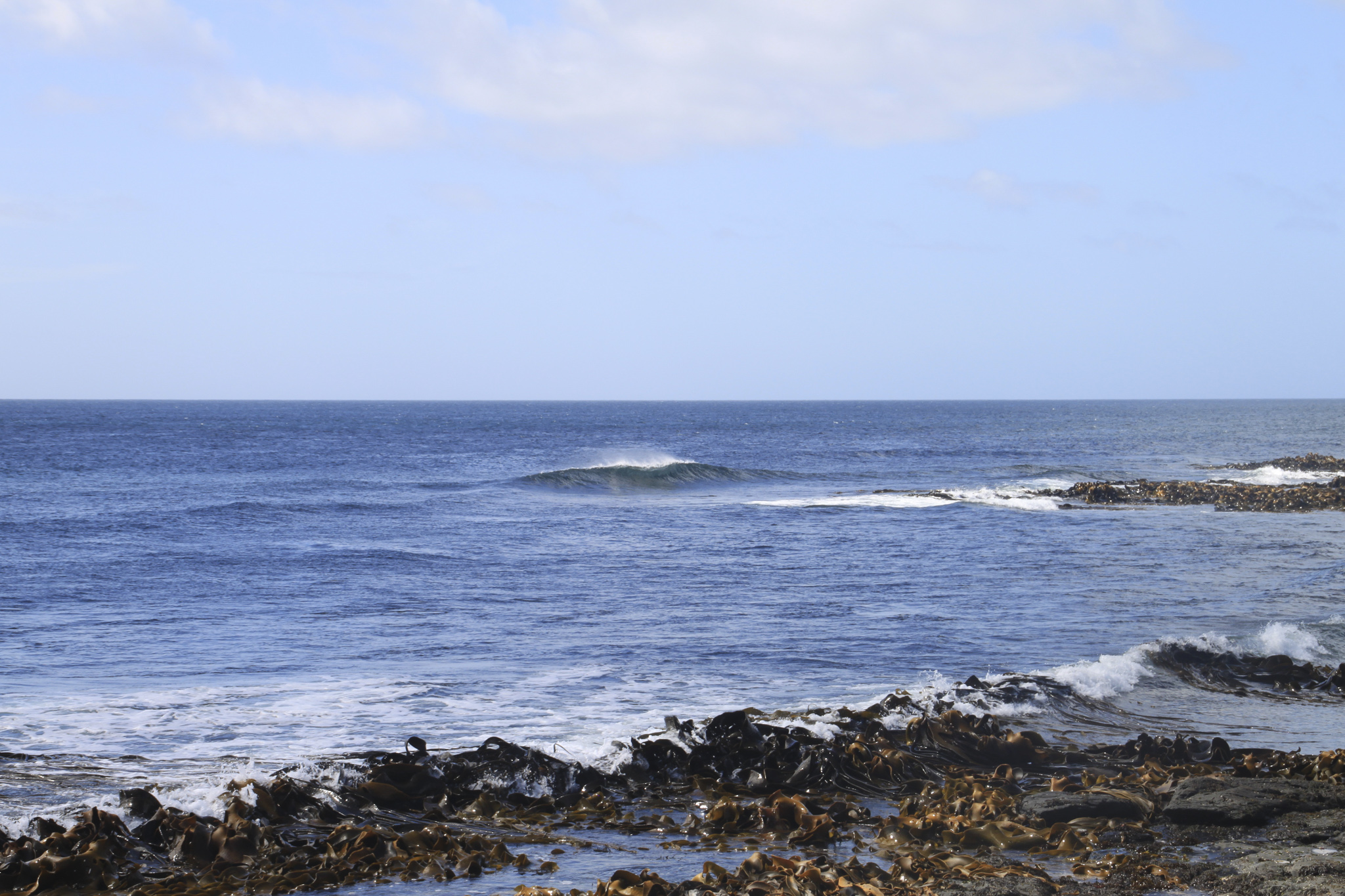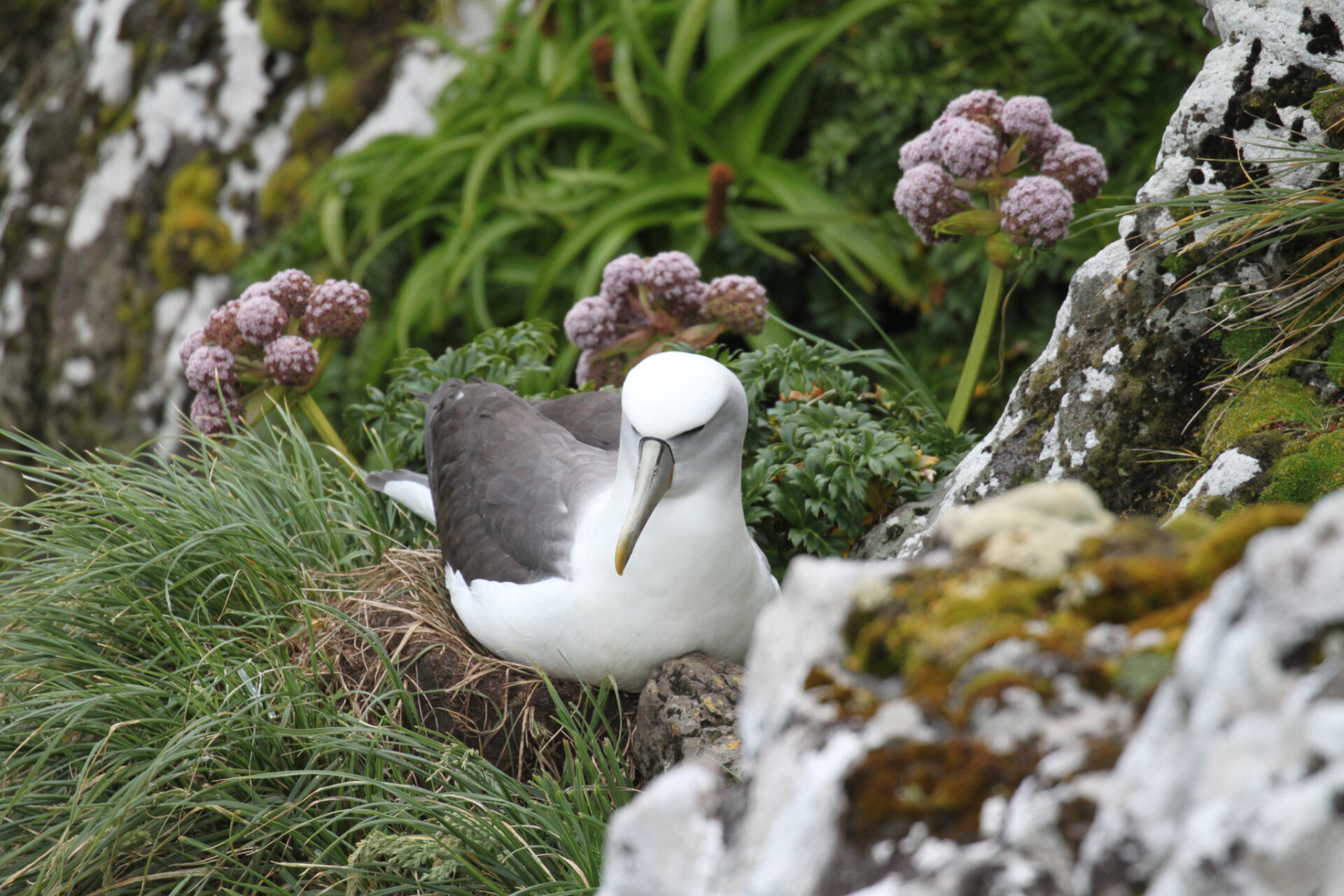Enderby Island, Motu Maha (458km from Bluff)
To the North of the Motu Maha archipelago lies Enderby Island, a 7km² island that is considered by many as the gem of Aotearoa’s Sub-Antarctic islands.
In 1850, a settlement was established on the island by Charles Enderby, the director of a British whaling company who attempted to hunt whales and farm the island. Due to the lack of whales caught and the cold and damp climate which made agriculture impossible, the settlement closed two years following its establishment. Never to be re-established, Enderby Island has been left to itself and is now bursting with marine life.
The entrance to the Island is navigated through Port Ross, a harbour that supports a common congregation of tohorā (southern right whales) during the winter. Sea lions have also become well-established on Enderby Island … particularly at Sandy Bay during their breeding season.

While Sandy Bay is home to an abundant sea lion population, it has not always been this way. Centuries of sealing that was carried out until the early 1900s posed significant threats on Aotearoa’s sea lion population.
Thankfully, these species are now protected and the populations are beginning to bounce back.
If you are an Ōtepoti resident, you will have likely seen this bounce back of the population. Following the first birth of a pup since the days of sealing on Taieri beach in 1993, the number of pups born each year around the Ōtepoti coastline have increased. Today, around 20 pups are typically born each year on the mainland.
Sandy Bay is the second largest breeding colony within the Motu Maha archipelago, with approximately 300-400 pups born each year. The largest colony is located 8km south of Enderby on Dundas Island, a remarkably small island that is only 200 metres in length and 100 metres in width, where 1200 pups are born each year.


Sea lions are not the only seal species found on Enderby Island … upon crossing the foredune I stumbled across this ihu koropuku (elephant seal) pup.

Due to Enderby’s small size, it makes a great walk around the island possible within one day.

Along our walk we passed many of the island residents, some of whom had the same idea as us and were enjoying a stroll on this sunny morning.

As we reached the dense vegetation of the island, we weaved our way through megaherb fields, tussock, and Southern Rātā forests.

Occasionally there would be a big roar from the vegetation, followed by a curious sea lion popping his head out as we walked past.

As we walked around the eastward facing side of the island, we stumbled across another surprise – Sub-Antarctic surf.

Pebble Point greeted us with Sub-Antarctic waves, small waves, but nevertheless, an opportunity to mind surf and imagine the possibility of being the first to surf one of the most remote surf breaks in the world.
The novelty of surfing a wave 460km south of Aotearoa is rather exciting and has never before been done.


Surfing on Enderby Island would be the experience of a lifetime, however, it would not be easy. Getting down to this island is a challenge in itself, it requires a vessel that can withstand powerful south swells, and being able to step foot on land requires a special permit from DOC. For health and safety reasons, surfing on this trip was not an option, but maybe one day one of these lonely peaks will be ridden …

After dreaming of the possibilities of surfing on Enderby, it was time to call it a day and return to Sandy Bay.


